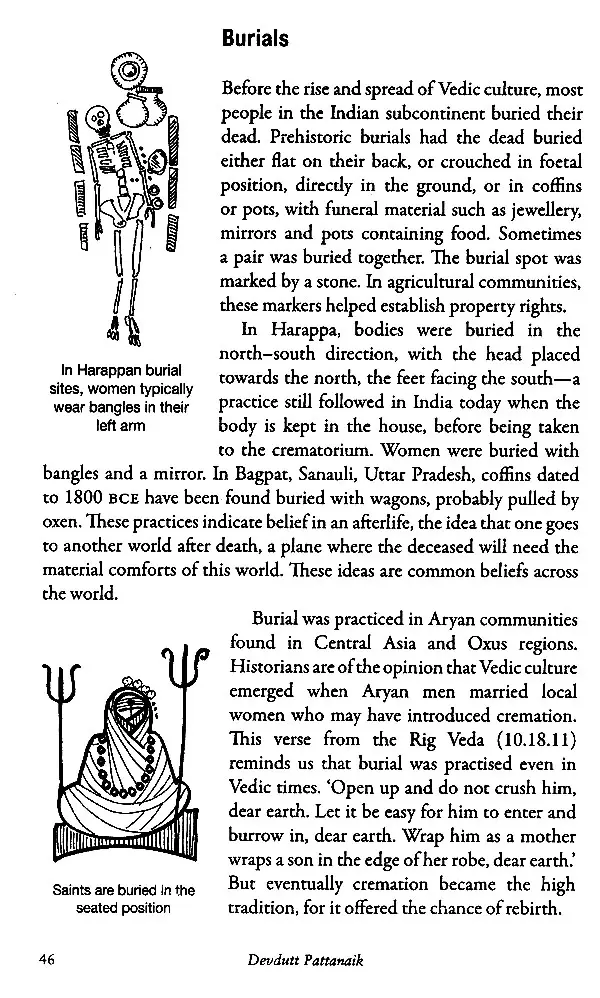
Garuda Purana and Other Hindu Ideas On Death, Rebirth and Immortality
Book Specification
| Item Code: | UAU087 |
| Author: | Devdutt Pattanaik |
| Publisher: | Westland Publications Pvt Ltd., Chennai |
| Language: | English |
| Edition: | 2022 |
| ISBN: | 9789395073448 |
| Pages: | 166 (B/W Illustrations) |
| Cover: | PAPERBACK |
| Other Details | 8.50 X 5.50 inch |
| Weight | 180 gm |
Book Description
Why do Hindus feed their ancestors? Why is burning the dead preferred to the building of tombs? Are Swarga and Naraka not the Hindu equivalent of Heaven and Hell? Does Hinduism have a concept like Judgement Day? What is the impact of death on Hindu notions of womanhood and caste?
Is the Vedic approach to death different from the Tantric one? What is the difference beTween bhuta, pishacha, preta, pitr and vetala?
Ideas of death, rebirth and immortality are embedded in the Hindu mind through ritual and story. Death is not just tragic, but ambiguous too. It is the end of one journey, and also the beginning of another. The dead are venerable, yet death is inauspicious, a source of impurity.
In Garuda Purana and Other Hindu Ideas on Death, Rebirth and Immortality, Devdutt Pattanaik explores the many concepts around death across the spectrum of Hindu mythology, tracing the roots of certain practices to as far back as the Harappan times. A unique enquiry into the Hindu response to death, the book serves as a guide to the choices we make in life.
During the Indian monsoons-between the ten-day festival of Ganesha (Ganesha Utsava), the elephant-headed remover of obstacles, and the nine-night festival of the Mother Goddess Durga (Nava-ratri)-Hindus observe Pitr-paksha, or the fortnight (paksha, in Sanskrit) of the ancestors (pitr). This is a dark fortnight of the lunar month, in the dark half of the year. It is a time to feed the dead. Facing the south, Hindu men across India are seen placing mashed rice balls mixed with black sesame seeds, known as pinda, on blades of grass, near water bodies. They pour water on these pinda in a peculiar way, known as tarpana, over the thumb of the right hand that is stretched outward away from the body. Crows are encouraged to eat this rice. Every shopkeeper knows business will be slow at this time. Indeed, many Hindu families avoid buying cars or houses or even new clothes. No contracts are signed. No weddings conducted. This hesitance is interesting for what it reveals of the ambiguous relationship Hindus have with the dead. The ancestors are venerated and need to be fed, it's true. However, all things associated with death are also deemed inauspicious and impure.
Of course, not all Hindus follow these practices and customs. Hinduism is diverse, dynamic and complex. But the dominant mainstream Hindu understanding of death comes from the Preta-kalpa of the Garuda Purana, which was composed a thousand years ago, and is still read during funeral ceremonies. The ritual of shradh that involves offering pinda to ancestors can be traced to Grihya-sutra literature, which is over 2,500 years old, indicating a remarkable continuity of tradition. The word 'pitr' used for ancestors can be traced even to the Rig Veda, Hinduism's oldest scripture.
**Contents and Sample Pages**















